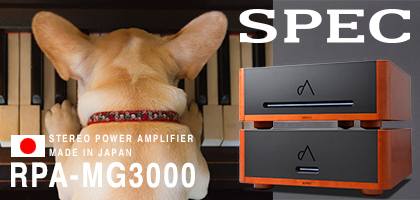No. 257 October 2025
- COVER REVIEW: ANCIENT AUDIO Silver Grand Mono Mk II ⸜ power amplifier • monoblocks » POLAND • Kraków
- KRAKOW SONIC SOCIETY № 153: 30 years of ANCIENT AUDIO » POLAND • Kraków
- FEATURE ⸜ music & technology: HISAO NATSUME presents - In search for the lost great pianism Chopin tradition » part 2 (France) » JAPAN • Tokyo
- REVIEW: AUDIOPHONIQUE Classic AP 300D ⸜ power amplifier » POLAND • Pruszków
- REVIEW: AVATAR AUDIO Holophony No. 1 ⸜ loudspeakers • floor-standing » POLAND • Osowicze
- REVIEW: DIVALDI Gold PA One ⸜ integrated amplifier » POLAND • Kraków
- REVIEW: J.SIKORA Aspire ⸜ turntable (deck + tonearm) » POLAND • Lublin
- REVIEW: MB AUDIO CABLE Silver ⸜ analog interconnect ⸜ RCA » POLAND • Turza Śląska
- REVIEW: XACT N1 ⸜ LAN switch » POLAND • Wrocław
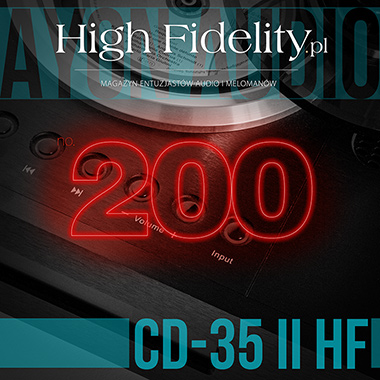
|
Editorial
Text: WOJCIECH PACUŁA |
|
No 200 January 1, 2021 |
|
WHY AND WHAT FOR WE ARE HERE

⸜ ON THE OCCASION OF THE 200th "HIGH FIDELITY" ISSUE, Austrian company AYON AUDIO has prepared a special version of their top Compact Disc player - CD-35 II HF Edition; it will be limited to only 35 units! Interestingly, two hundred months ago, when the first issue of "High Fidelity" was released - HF is released on monthly bases - no one had any idea how the audio industry would change. And the fact is that it has changed a lot. The most serious and fundamental change concerns the way music is "consumed". Therefore, products related to the broadly understood computer audio turned out to be the most important branch of our industry. So: file players, streamers, digital-to-analog converters, headphone amplifiers and the headphones themselves. Especially the latter have come a long way from uncomfortable products for professionals, used primarily in studios, to ones used by also crazy music lovers in their homes, combined with fashionable (!) gadgets used by everyone, regardless of age, profession or education. I confess that I made a mistake in their case twice. For the first time, when over-ear headphones of the "studio" type with an impedance of 32 Ω hit the market. I perfectly remember a conversation from 14 or 15 years ago with Andrzej Kisiel, editor-in-chief of "Audio" magazine, that at the time I worked for, in which he asked me why headphones with such low impedance are made at all. I replied truthfully and to the best of what was common knowledge at the time that such headphones were intended to be used with portable devices that did not feature current-efficient headphone amplifiers. To which Andrzej replied that young people would soon start wearing such large headphones on the streets. 
⸜ The CD-35 II HF EDITION is a new device and has already won a joint award from the HIFISTATEMENT.net and "HIGH FIDELITY" monthly magazines: STATEMENT in High Fidelity; the second awarded brand was Transrotor for the TSR 9 tonearm I made a lot of fun of him - luckily, the editor-in-chief of "Audio" was not offended. I had all the advantages in my hand, it is many years of experience in working with headphones in the studio, listening - first to children stories, then music - with headphones ever since I can remember, and I had a lot of different headphones at home. I couldn't believe that one could be so careless and wear such models on the street, where contact with the environment is often a matter of life and death. I was wrong. Today, many young people - and not only young ones (!) - walk the streets wearing large, closed headphones that cover the entire ear. My second mistake concerned Apple's Air Pods - wireless in-ear headphones, launched in 2016. These were not the first headphones of this type, i.e. Bluetooth ones without a headband connecting the left and right channels, but Apple was the company that applied this concept to mass electronics. I saw them at some audio exhibition and decided that it was a very nice idea, an interesting gadget, but rather with little, if any, future. They seemed quite unpractical - the lack of a headband and cables seemed to be an invitation to lose them all the time. I was wrong. Today, not just Apple headphones any more on the market, but also extremely expensive Bluetooth in-ear headphones, which fit entirely inside the ear - for example, CAMPFIRE AUDIO products and DEVIALET ones. It is still a niche, most headphones feature a cable, but it’s a growing niche. 
⸜ The sticker signed by Gerhard Hirt proves the special status of the device While parts of our industry have changed beyond recognition, others have remained surprisingly immune to the computer revolution. I do not have to even mention vinyl record that made its comeback, or tube amplifiers, which in the world of perfectionist audio, i.e. audiophile world, are now treated as normal as convertibles among cars. It seems much more important to me how little the thinking about high-class sound has changed. This is still an elusive, not obvious goal and we are still trying to achieve it with the old proven methods. Something I am personally associated with, that is the audio press, has not changed either. The changes that did take place in it, i.e. the absolute and ill-conceived admiration for home cinema in the context of audiophilism and our industry, today are nothing more than an unpleasant memory. Admittedly, most audio magazines succumbed to the erroneous belief that stereo was over, and some even changed the title to emphasize this change - the British magazine "What Hi-Fi?" that for time changed its name to the „What Hi-Fi? Sound and Vision” being a perfect example, however, only to return to their roots, and the stereo audio is currently doing better than ever before. Also thanks to the PC audio. 
⸜ We are also celebrating the 200th RELEASE of HF with AC RECORDS - the Pictures album by Larry Koonse (guitar), Darek Oleszkiewicz (double bass) and Adam Czerwiński trio released under our patronage will have a special edition with an additional ART PRINT, signed by the graphic designer, Mr. Kuba Karłowski, and the owner of the record label, Mr. ADAM CZERWIŃSKI |
This time I was right - I thought from the very beginning that these were two different, incompatible worlds: utilitarian (video) and one drive by passion (stereo). As a result of dropping the home cinema segment from the audiophile’s interest orbit, the amount of money spent on multi-channel audio systems has also decreased dramatically - a victim of this change. And yet it was all "in the open", all one had to do was to ask oneself, reach deeper and try to analyze how "I" perceive it and what turns "me" on. In my case, the matter was clear: I love music, two channels and discs - SACD and CD, and the analog tape is my point of reference. The press is another area in which, I believe, I was right I took a shot at it at the right time and read it correctly. Everything I am going to say about it, what I am going to write and say will be tainted with a subjective view, the perspective of the "High Fidelity" - that's clear. But also, due to my education and experience, I also have grounds to consider these opinions quite sensible and objective. Let me explain. Well, over the time those 200 issues of our magazine were released, the specialist press, not only the audio one, but that’s what interests us, has significantly stratified. While earlier, in pre-Internet times, there were only a few titles in a given language, now there are at least a dozen of them, and several dozen in English, and I am talking only about regularly published magazines, not blogs and forums, as these are something completely different. The stratification I'm talking about resulted in their average level dropping significantly and that the quality of individual titles has diversified. The reason is, of course, an universal access to the Internet and inexpensive tools that allow anyone to become a "journalist" and "publisher". This caused hesitance, then uncertainty and finally indifference of the readers. Professor Janusz Sławiński, the legend of the world of Polish language studies, wrote in 2005 (!):
The point was that today the text means little, and the ones that mean something are rare and hard to find. Which is a paradox, because it was an access to information that was to be the most important legacy of the Internet. And it turned out to be an illusion, it is quite the opposite, because in the times of fake news we are even more confused than ever before. It's the same with audio magazines. Please do not get me wrong - I read a lot myself, I still subscribe to a few titles, researching information about a given product, I browse the Internet. But what I actually find in relation to what I use is in a huge disproportion to the disadvantage of valuable materials. This is because most of the audio-related texts we come across are either promotional materials, or with very little merit, also in terms of technical information, or even silly. In this way, the stratification I am talking about makes itself felt and we can point to "tabloids", such as the already mentioned "What Hi-Fi?", where the test often takes half a page, but also to elite magazines addressed to a narrow audience - let it be "HIFICRITIC". And now - from the very beginning I was aware of these threats and I wanted “High Fidelity” to stay away from both of these extremes. I believe that readers deserve interesting, dense and nicely written text. We, in the HF, we try to do this, and although we do not always succeed, it is the goal we pursue. It is also important that as many people as possible benefit from such a text, but also that it is not superficial. That is why the texts in HF are long. 
When some ten years ago one of the distributors noticed that we were writing, whet he believed, were too long texts, we started writing twice as long and even more in-depth ones. According to the reading statistics, but also letters from our Readers and based on the response from around the world (from the industry), it was the right move. This is confirmed also by the latest research. This return to professionally written texts is evident in every field. The latest ad for the French magazine Le Monde says: "Write fewer articles, but better ones." In the article in the latest issue of the trade bimonthly "Press", in which the author analyzes the French publishing market in the context of "pandemic" changes, we read:
Amen to that! The purpose of an audio magazine is to inform, entertain and offer an aesthetic satisfaction. My favorite is the quarterly "Stereo Sound", although not only it. The Japanese impress me with their reliability, in-depth study of the problem and commitment to facts, contrary to everything others say. It is thanks to them that many things that were initially treated as voodoo by most now are treated as standard in audio, everyday practice, because they are supported by theory, technique and listening experience. I don’t full myself - mass communication as the main frame of reference, as Maria Janion wrote about Polish culture in Amazing Slavic Region, is a fact and it dictates the dynamics of change. But in this dynamics there are constant things that benefit from them. Not by much each time, but as a result of the accumulation of minor shifts - ultimately a lot. That is why the best turntables, digital sources, amplifiers and even loudspeakers - this is my original diagnosis - have been created in the recent years. Small changes finally produced a kind of "turning point". For this to make sense, we, both as creators and as readers, must be active in our choices, we cannot stop at what is known and "convenient". Let us avoid what Piotr Czapliński called the "passive effect", that is, something that characterizes contemporary culture (literature). As he says: "The ideology of immutability makes culture participants immobile in communication" (Piotr Czapliński, Efekt bierności. Literatura w czasie normalnym, Krakow 2004, p. 130). From the creators' point of view, there must be an imperative related to education. An audio magazine cannot just be a tabloid in which something is published, but it should also be open towards conveying different truths. Maria Janion in the aforementioned work says that the basis of the humanities - and it is indispensable if we want to function as a society, engineers will not ensure it - is a story: “It's not enough to see, experience or even understand something. You still need to be able to tell the story. And the story “… strives for form, whether it wants it or not. If it does not strive for form, it becomes incomprehensible ”(Maria Janion, Niesamowita Słowiańszczyzna, Kraków 2006, p. 11). And that's what we're here for - to tell stories. I understand the role of audio journalists dealing with tests, interviews and reviews as the ancients understood it, i.e. we are to be "storytellers", people describing and explaining the world - in this case the world of audio. Of course - there are plenty of stories in public space. There is nothing wrong with multiplicity and diversity, bad starts to happen when we choose wrong. Do you remember what Mietek Stoch said when I was asked him why he needed so many (over 35,000) LPs? - He said that although he would never listen to most of them, having them all gave him a CHOICE (MIECZYSŁAW STOCH, czyli 35 000 winyli to za mało…, Wojciech Pacuła, „High Fidelity” No. 171, July 1, 2018). And this is what I wish you and myself - a free choice. And then, let us be wise in these choices :) For my part, I guarantee you reliability, honesty and moderation on our side. 
THANK YOU for staying with us through these 200 editions, for reading texts describing nearly 2,000 products, over a hundred interviews, several hundred album reviews and 130 reports from the meetings of the Krakow Sonic Society. It is for us - I believe that this is what all employees of "HIGH FIDELITY" think - a great pleasure and responsibility at the same time. After all, we are here for you - to TELL you STORIES, stories about sounds and music. ■ |
About Us |
We cooperate |
Patrons |
|
Our reviewers regularly contribute to “Enjoy the Music.com”, “Positive-Feedback.com”, “HiFiStatement.net” and “Hi-Fi Choice & Home Cinema. Edycja Polska” . "High Fidelity" is a monthly magazine dedicated to high quality sound. It has been published since May 1st, 2004. Up until October 2008, the magazine was called "High Fidelity OnLine", but since November 2008 it has been registered under the new title. "High Fidelity" is an online magazine, i.e. it is only published on the web. For the last few years it has been published both in Polish and in English. Thanks to our English section, the magazine has now a worldwide reach - statistics show that we have readers from almost every country in the world. Once a year, we prepare a printed edition of one of reviews published online. This unique, limited collector's edition is given to the visitors of the Audio Show in Warsaw, Poland, held in November of each year. For years, "High Fidelity" has been cooperating with other audio magazines, including “Enjoy the Music.com” and “Positive-Feedback.com” in the U.S. and “HiFiStatement.net” in Germany. Our reviews have also been published by “6moons.com”. You can contact any of our contributors by clicking his email address on our CONTACT page. |
 



|
   |
main page | archive | contact | kts
© 2009 HighFidelity, design by PikselStudio,
projektowanie stron www: Indecity



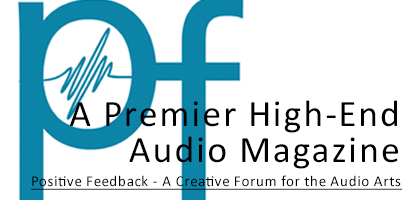
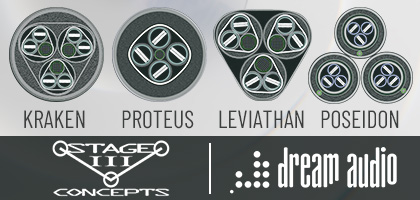

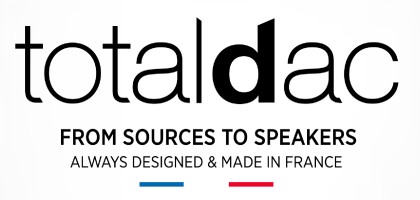
 T IS SIMPLY NOT POSSIBILE to predict events such as a pandemic, as the one of the COVID-19 virus we are currently suffering from. That is, the possibility always existed, because the inevitability of this type of events has been discussed in scientific circles for years, and the literature also predicted it - it is an event from the "inevitable" kind, but no one had any idea when it would happen, or also that it would look the way it does.
T IS SIMPLY NOT POSSIBILE to predict events such as a pandemic, as the one of the COVID-19 virus we are currently suffering from. That is, the possibility always existed, because the inevitability of this type of events has been discussed in scientific circles for years, and the literature also predicted it - it is an event from the "inevitable" kind, but no one had any idea when it would happen, or also that it would look the way it does.



